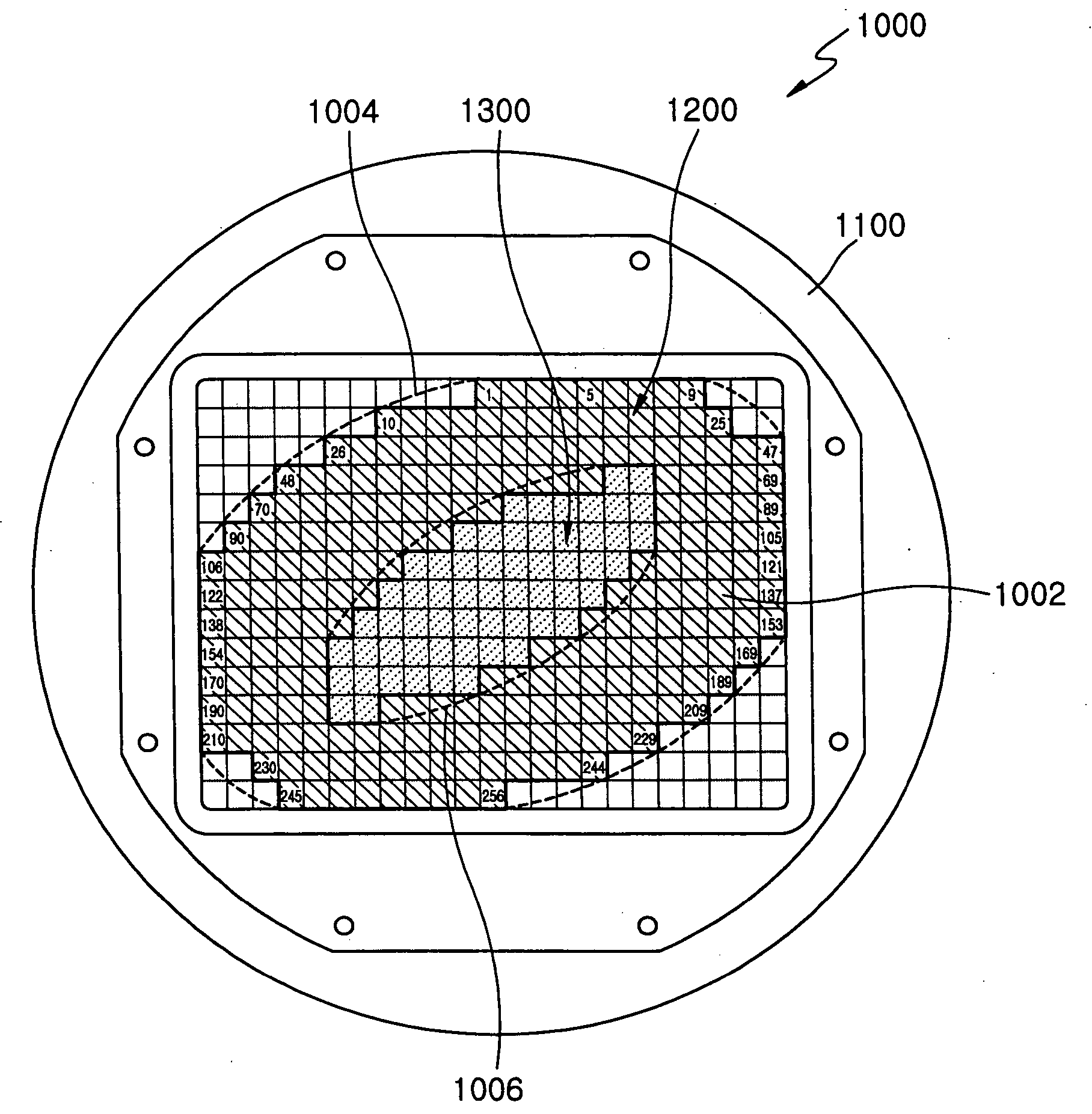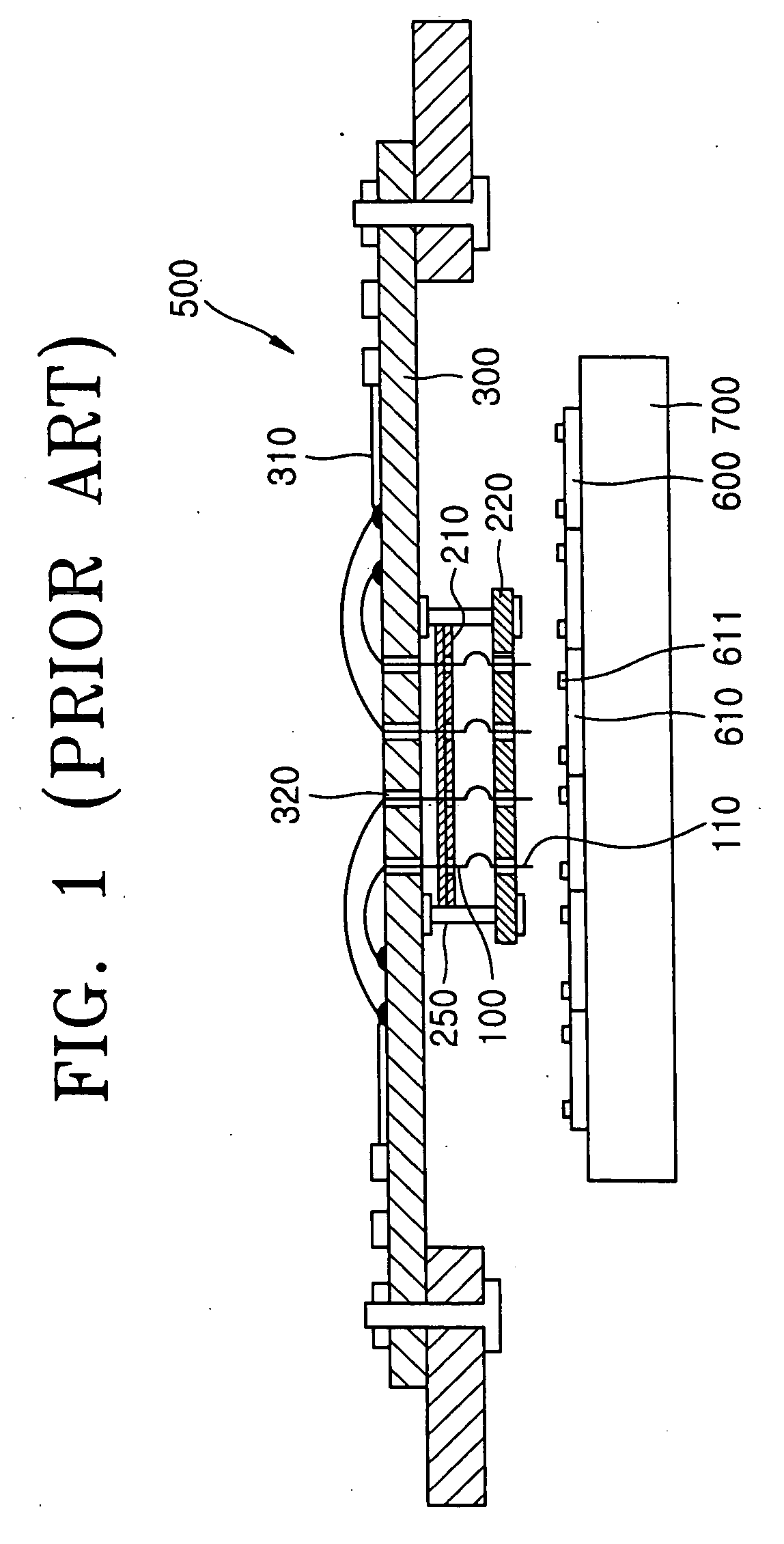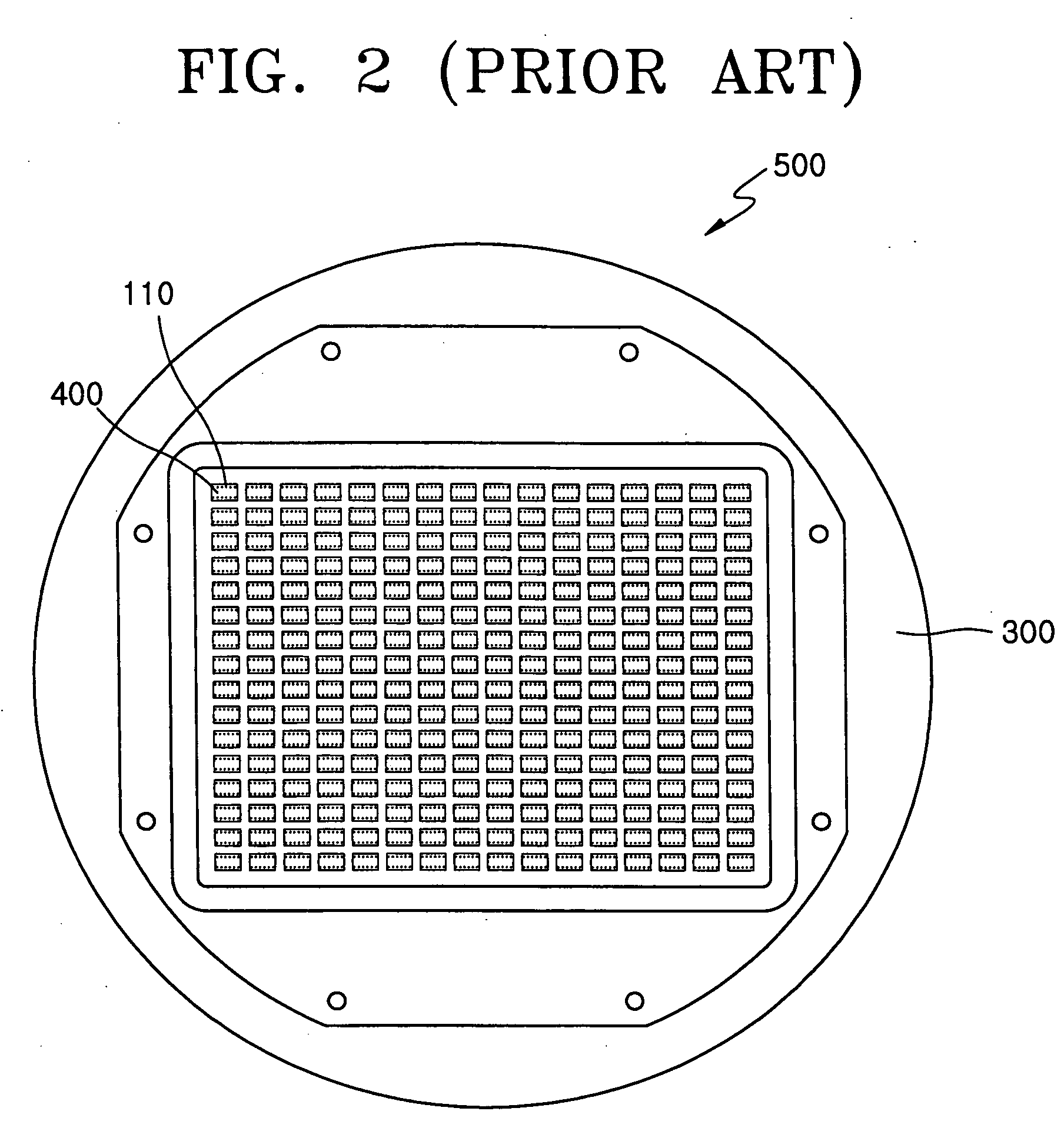Donut-type parallel probe card and method of testing semiconductor wafer using same
- Summary
- Abstract
- Description
- Claims
- Application Information
AI Technical Summary
Problems solved by technology
Method used
Image
Examples
Embodiment Construction
[0027] Exemplary embodiments of the invention are described below with reference to the corresponding drawings. These embodiments are presented as teaching examples. The actual scope of the invention is defined by the claims that follow.
[0028]FIG. 6 is a plan view of a parallel probe card 1000 having a plurality of probing blocks 1002 arranged in a donut shape according to an embodiment of the present invention. The parallel probe card will be referred to hereafter as a donut-type parallel probe card 1000.
[0029] Referring to FIG. 6, donut-type parallel probe card 1000 includes a main substrate 1100 having conductive patterns and probing blocks 1002 installed on a surface of main substrate 1100. Probing blocks 1002 include probes corresponding to pads on respective individual chips. Probing blocks 1002 are described in further detail below with reference to FIG. 9.
[0030] Unlike conventional probing blocks, probing blocks 1002 of donut-type parallel probe card 1000 have a donut sha...
PUM
 Login to View More
Login to View More Abstract
Description
Claims
Application Information
 Login to View More
Login to View More - R&D
- Intellectual Property
- Life Sciences
- Materials
- Tech Scout
- Unparalleled Data Quality
- Higher Quality Content
- 60% Fewer Hallucinations
Browse by: Latest US Patents, China's latest patents, Technical Efficacy Thesaurus, Application Domain, Technology Topic, Popular Technical Reports.
© 2025 PatSnap. All rights reserved.Legal|Privacy policy|Modern Slavery Act Transparency Statement|Sitemap|About US| Contact US: help@patsnap.com



